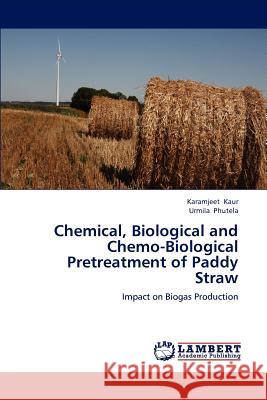Chemical, Biological and Chemo-Biological Pretreatment of Paddy Straw » książka
Chemical, Biological and Chemo-Biological Pretreatment of Paddy Straw
ISBN-13: 9783659194450 / Angielski / Miękka / 2012 / 164 str.
Paddy straw is one of the most abundant lignocellulosic wastes on the earth. The organic matter of paddy straw can be degraded by the sequential action of hydrolytic, acetogenic and methanogenic bacteria to produce biogas. But, lignin and silica are the main deterrents of microbial action on cellulose/hemi-cellulose component of paddy straw. Thus, for efficient utilization of paddy straw, pretreatment is very essential. This study is, therefore, aimed at comparing chemical, biological and combined (chemical+biological) pretreatment of paddy straw to analyze their potential in increasing paddy straw digestibility and biogas production. Chemical pretreatment proved to be better than the biological and combined pretreatment. Amongst the different chemical pretreatments, 4% NaOH and 4% Na2CO3 with 60 min microwave irradiation showed a profound increase in paddy straw digestibility with more than 85% silica removal and a respective increase of 60.9% and 54.4% in biogas production as compared to the untreated paddy straw.
Paddy straw is one of the most abundant lignocellulosic wastes on the earth. The organic matter of paddy straw can be degraded by the sequential action of hydrolytic, acetogenic and methanogenic bacteria to produce biogas. But, lignin and silica are the main deterrents of microbial action on cellulose/hemi-cellulose component of paddy straw. Thus, for efficient utilization of paddy straw, pretreatment is very essential. This study is, therefore, aimed at comparing chemical, biological and combined (chemical+biological) pretreatment of paddy straw to analyze their potential in increasing paddy straw digestibility and biogas production. Chemical pretreatment proved to be better than the biological and combined pretreatment. Amongst the different chemical pretreatments, 4% NaOH and 4% Na2CO3 with 60 min microwave irradiation showed a profound increase in paddy straw digestibility with more than 85% silica removal and a respective increase of 60.9% and 54.4% in biogas production as compared to the untreated paddy straw.











